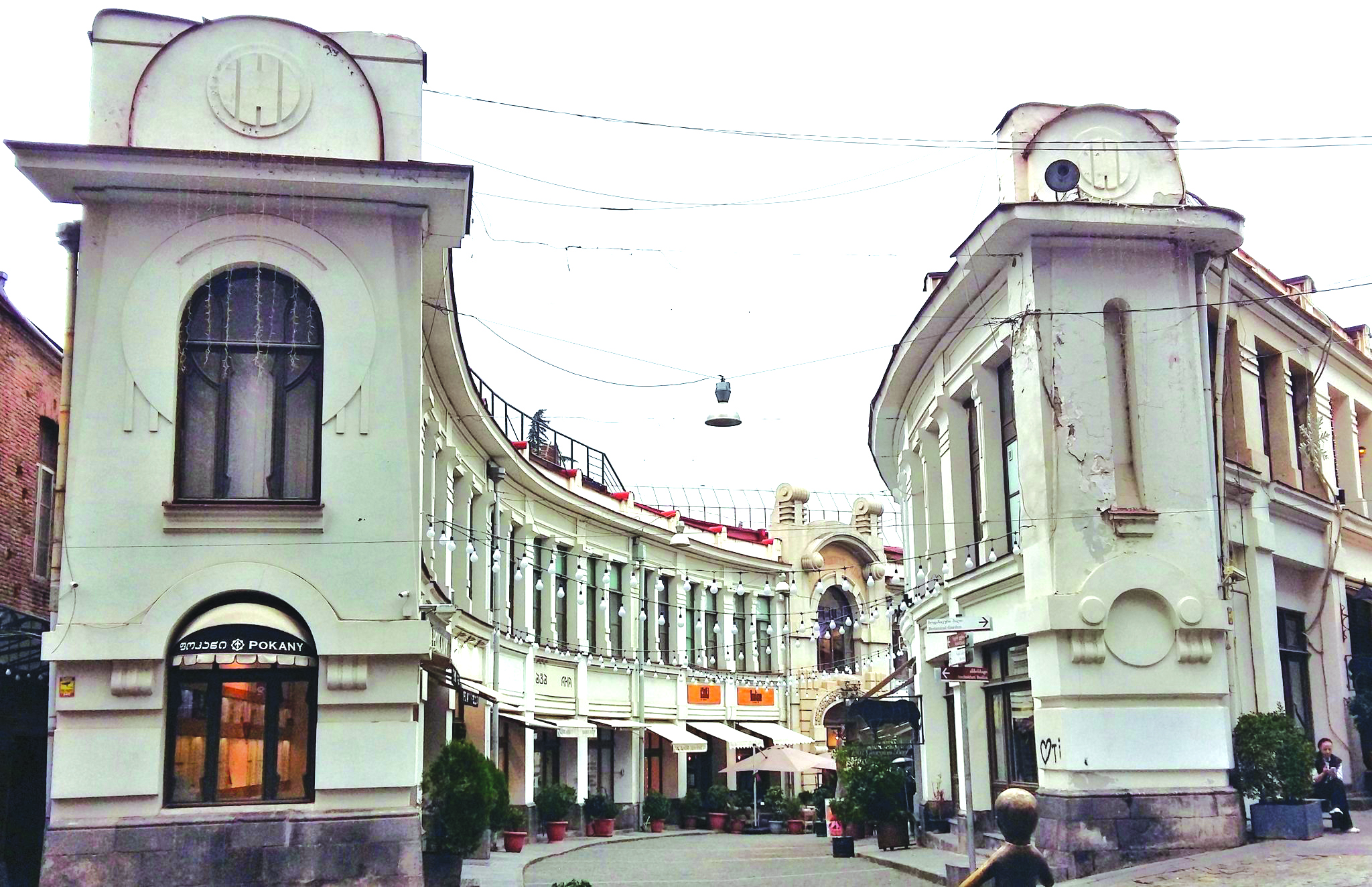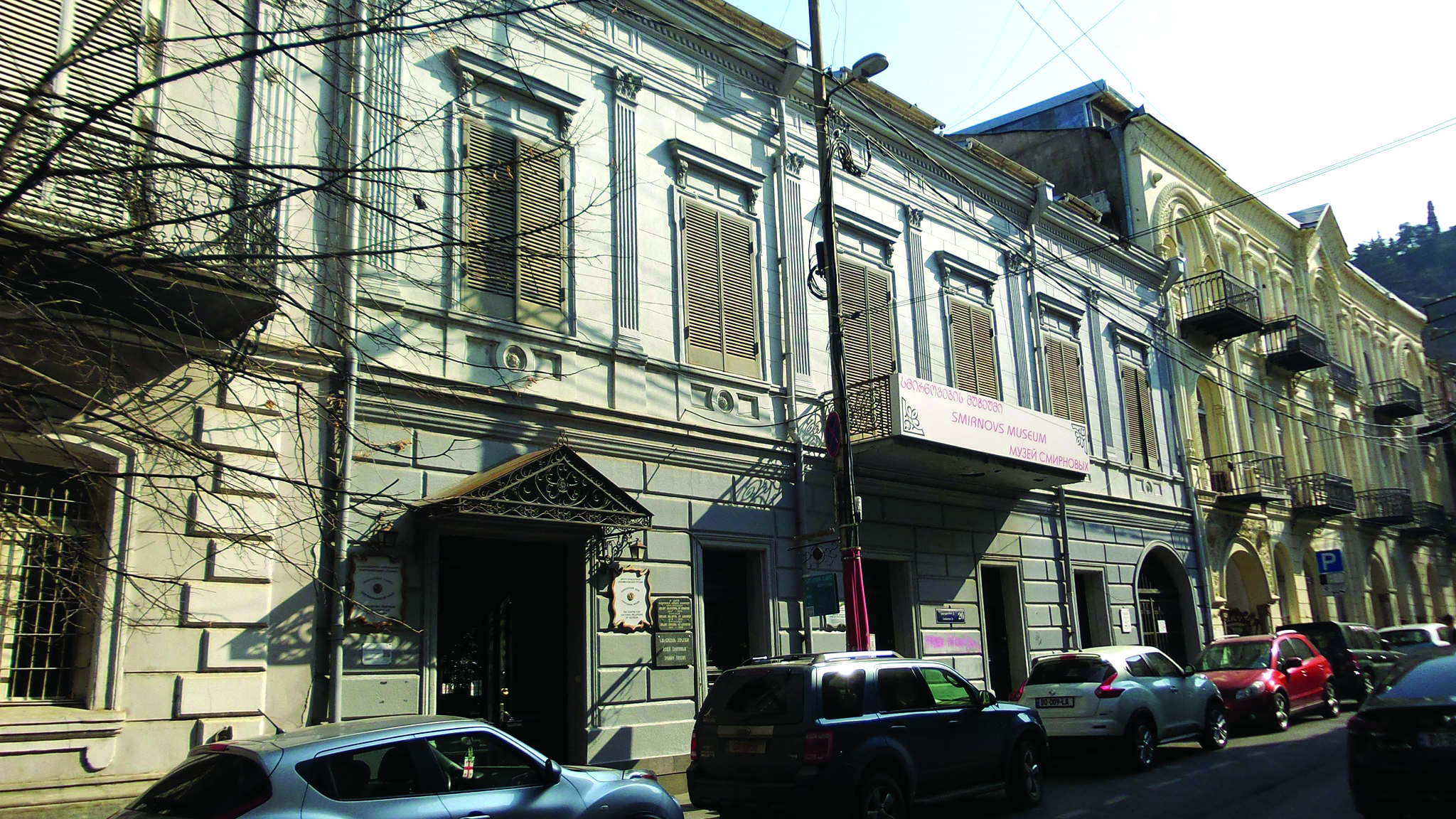Tbilisi has many old and unique buildings to catch your eye and inspire with their hidden stories and legends. From the “Devil’s House” on Ingorokva Street to Tchaikovsky’s holiday getaway, Georgia’s capital has plenty to explore. Take a virtual walk with us…
THE “DEVIL'S HOUSE”
One story says it was built by an Armenian merchant who practiced Satanism and mysticism inside the walls. Some say there is a secret underground tunnel accessed through a chimney. And it has ghosts- or at least one: that of an Armenian woman who hung herself in the garden, believed to be either the wife or daughter of the merchant. People who have been inside claim they hear strange noises and see objects floating in the air, though there’s no evidence to prove these as more than rumors.
Back to reality- the “Devil” you see above the entrance to the rear courtyard is in fact Pan, God of the Wild and Shepherds, from Greek mythology. It was built in the 19th century by famous Tbilisi-based Polish architect Aleksander Szymkiewicz, who is also the author of a number of other unique buildings in the city, among them the Supreme Court of Georgia, the Conservatoire, the Caucasian Silk Station, Andreoletti’s house, Rustaveli Theater and the original Funicular building.
The house belonged to a wealthy man who had his own tennis court in the internal yard.
THE MANTASHEV LEGACY

At the beginning of the 20th century, a trading row (a Rastabazar) was built on Sioni and Erekle streets, known as the Mantashev Rows. "Rastabazar" is a Persian word which means "a line of stalls and workshops arranged in one row". It was named after Tbilisi-born Alexander Mantashev (1842 - 1911), an oil magnate, industrialist, financier and philanthropist (more about him in the next issue of Where.ge!) The trading row is headed by two modern-style houses: the first bordering the Museum of the History of Tbilisi, and the second one dividing the area into Chardin Street and Bambis Rigi (Cotton Row). The pedestrianized Bambis Rigi is today one of the most popular streets in Old Tbilisi. Chardin Street is very narrow and short, named after French explorer Jan Chardin, who visited Tbilisi in 1863. In his days, the street was called “Dark Row”, because it was so crowded with shops and workshops. And you can still see the Mantashev buildings today, as well as his family coat of arms and family home at Mantashev House at 8 Kikoze Street.
PUBLIC SCHOOL 43 (THE FORMER MANTASHEV TRADING SCHOOL)
At 50 Asatiani Street in Sololaki is the famous Public School 43, the former Mantashev Trading School. It was built in 1910-1911 (architect Gazaros Sarkisian), and was sponsored by the abovementioned businessman Alexander Mantashev. On its original copper plate were the words: "This trading school was opened on the 1st of July in 1911 by Tiflis Merchants' Partnership during the ruling of his Majesty Duke Vorontsov-Dashkov and with the money of the honored guardian of the school - Mantashev". The school was well equipped for studies, with workshops and a sports hall. In 1913, Nicholas II of Russia visited the school. Pupils of the school counted astrophysicist Victor Ambartsumian, great American film-producer Rouben Mamoulian, famed tennis-player Alexander Metreveli, and composer Michael Tariverdiev. His first recognized composition was his hymn to the school, which is still remembered and sung by its pupils today.
TCHAIKOVSKY'S HOUSE
12 Chaikovsky Street belonged to Anatoly Tchaikovsky, younger brother of great Russian composer Pyotr Tchaikovsky, who visited him there each year between 1886 and 1890. Anatoly was a prosecutor of the District Court and then Vice-Governor. Pyotr recalled with great enthusiasm these periods of his life in his letters and diaries.
CAUCASIAN HOUSE

At 20 Galaktion Tabidze Street is "Caucasian House" or, as some call it, "The Pushkin Memorial of the Smirnovs' House". It was built in 1860 by order of the head of the Tamamshev family (a rich Armenian merchant) and according to the design of Swedish architect Otto Simenson, in a traditional European style with colored wooden balconies. Elizaveta, Tamamshev's daughter, married Michael Smirnov and received this house as her dowry. Michael brought furniture from his mother's Petersburg saloon into this house and it quickly became one of the centers of cultural communication, seeing remarkable Georgian and Russian writers, scientists, actors, and musicians meeting there to converse. In this way, many unique exhibits appeared in Tbilisi: decorative tables made by Peter the Great, Pushkin's ‘Gentleman of the Monarch' hat, a tobacco case which once belonged to Katherine II, and many other things. Ilia Chavchavadze, Niko Nikoladze, P. Melikishvili, A. Rubinstein and P. Tchaikovsky spent a lot of evenings in this house. The family collection of the Smirnovs was gifted to Georgia in 1985.
By Katie Ruth Davies
